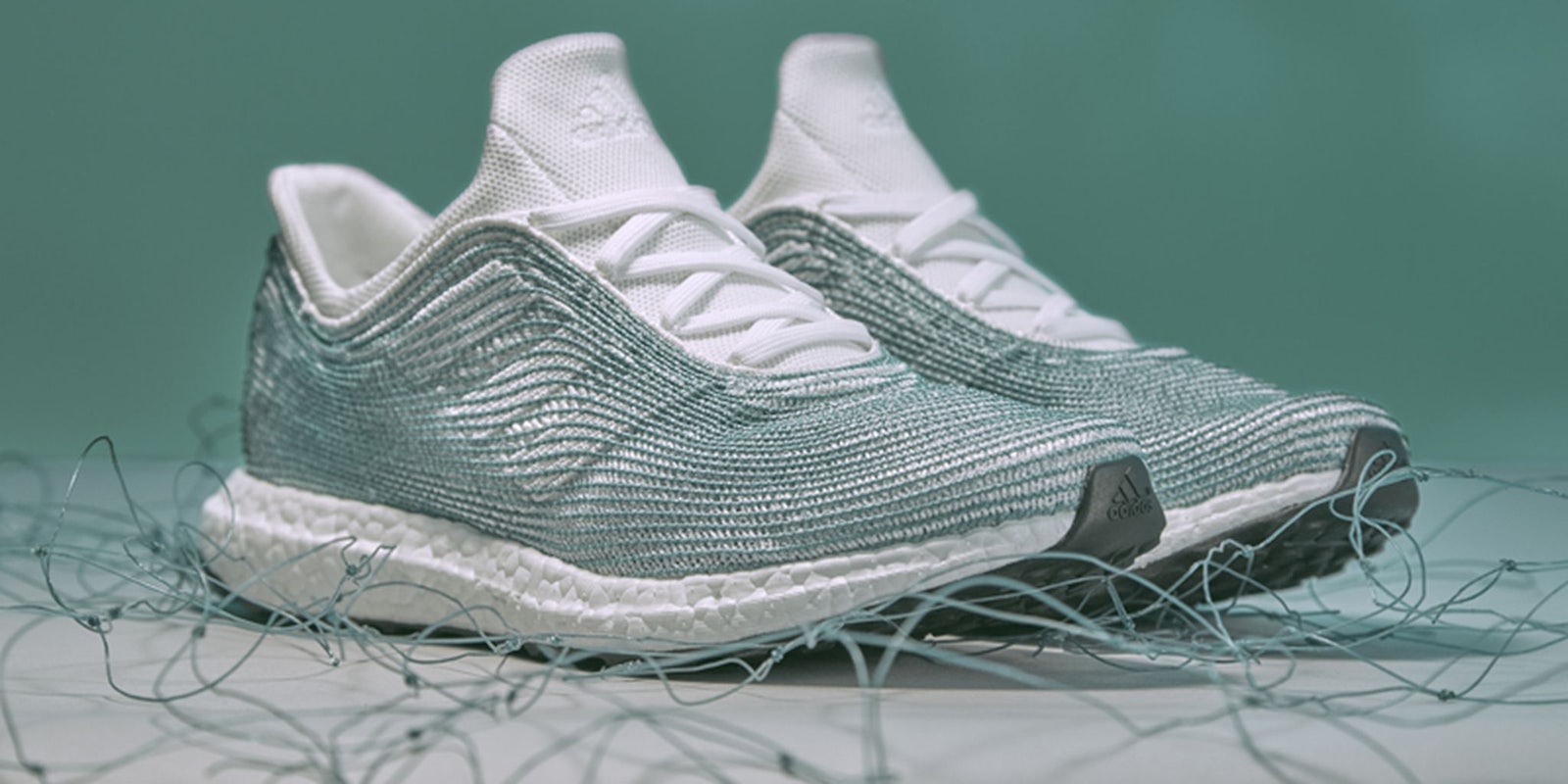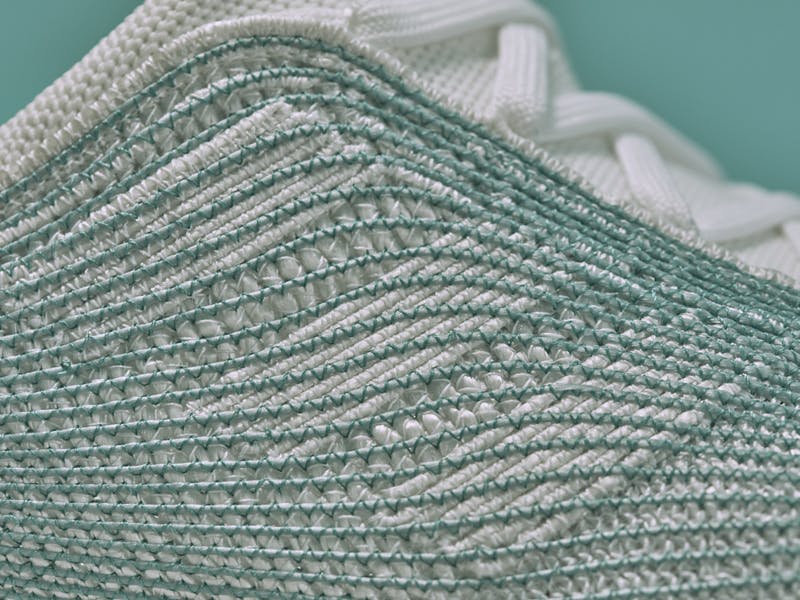Adidas debuted the ready-to-wear version of its sneaker made from sea garbage, and you have a chance to win a pair.
The sea foam running shoes, called Adidas x Parley, were created in partnership with sustainability company and advocacy group Parley for the Oceans. Adidas debuted a prototype of the shoe in 2015 in front of the United Nations, and finally unveiled the official kicks on Wednesday.
Made with recycled fishnets and plastic collected from the oceans around the Maldives and illegal netting from Sea Shepherd, the shoes were quite challenging to create.
As Adidas materials manager Kelli George explained, one challenge was turning the fishnets into workable yarn. The materials Adidas received still had organisms and “ocean gunk” tangled up among the netting; so George took the netting to a laundromat to start the process of cleaning and creating new shoe material.
Adidas needed 330 pounds of raw material to test and produce workable yarn. One shoe contains recycled material from 13 grams of gill nets and 16.5 plastic bottles. (The soles are Adidas foam Boost soles, not recycled material.)
https://www.youtube.com/watch?v=U7K8VIqmj-M
June 8 is World Oceans Day, and the beginning of Adidas’ Instagram contest for people to win a pair of the specialty shoes. There are only 50 available, and the contest lasts until July 31. Adidas wants you to create an Instagram video to demonstrate how you’ll avoid plastic items and support Parley’s Ocean Plastic Program. According to a statement, official rules will be posted on the company’s Instagram.
Though the shoes are cool and a zero-waste product, you won’t be seeing these trash-made shoes on the department store shelves. But the recycled ocean plastics and polymers developed through the Parley partnership will be implemented into Adidas products.
As George writes, “Now that we have the understanding and the knowhow which could potentially provide the solutions for future manufacturing processes, we’re in a pretty good place to further enhance our operations in the future.”
H/T Wired



